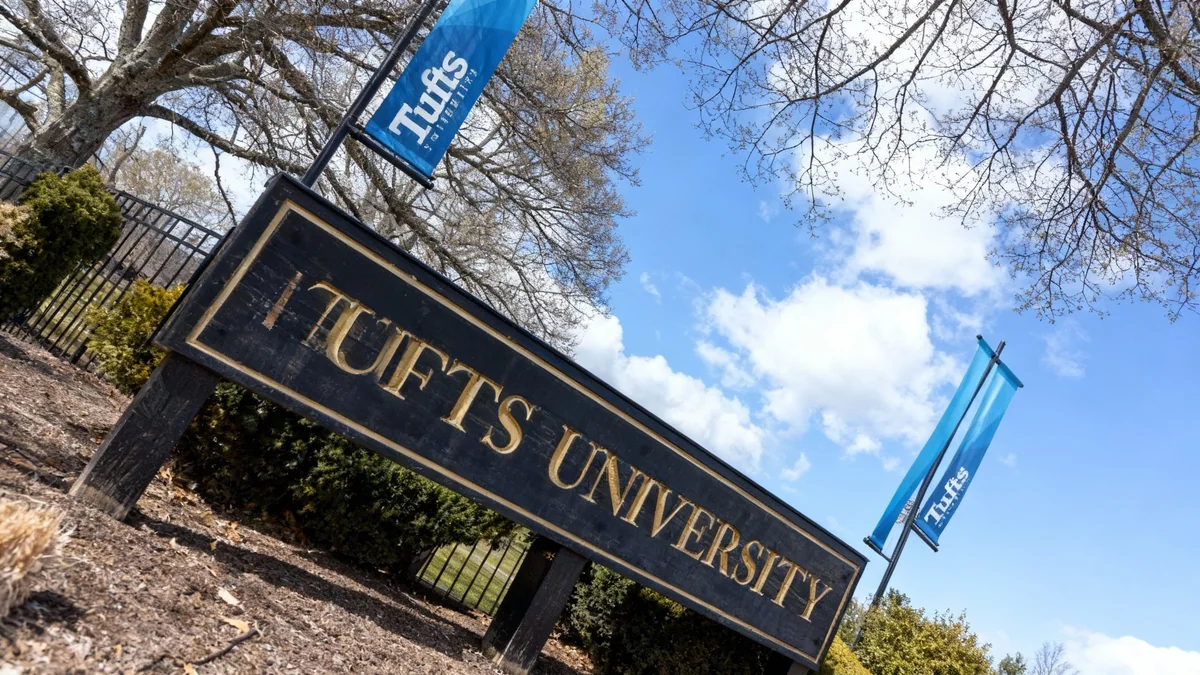The Department of Education has finalized new regulations that establish different borrowing limits for graduate and professional degree students. After a two-week negotiation process, a consensus was reached, setting a $200,000 cap for a select list of professional programs and a $100,000 limit for all other graduate studies.
These new rules, developed in response to the One Big Beautiful Bill Act passed by Congress, aim to redefine federal student loan accessibility for advanced degrees. The final definition of what constitutes a "professional program" was a central point of contention during the negotiations, ultimately leading to a narrowly defined list that includes fields like medicine, law, and dentistry.
Key Takeaways
- The Department of Education established a new two-tier system for graduate student loan limits.
- Students in designated "professional programs" can borrow up to $200,000.
- All other graduate students will be limited to a maximum of $100,000 in federal loans.
- The definition of a professional program was narrowed to a specific list of degrees after intense negotiations.
- The agreement was reached by consensus, meaning the department will not unilaterally alter the language before public comment.
Defining the New Loan Landscape
The regulations introduce a significant shift in how the federal government approaches student lending for post-baccalaureate education. The core of the new framework is the distinction between graduate and professional degrees, a classification that now carries substantial financial implications for students.
Under the new rules, graduate students pursuing master's or doctoral degrees in fields not on the approved professional list will face a borrowing ceiling of $100,000. This cap applies to a wide range of academic disciplines, from humanities and social sciences to many STEM fields.
In contrast, students enrolled in programs officially designated as "professional" will have access to a higher loan limit of up to $200,000. This higher cap is intended to accommodate the typically higher tuition costs and longer duration of these specific programs.
The Contentious Path to a Definition
The central debate during the negotiation period, which included two separate week-long sessions in October and November, was how to define a "professional program." The Department of Education's initial proposal was a restrictive list of just 10 degrees.
This initial list included degrees widely recognized as professional credentials, such as:
- Medicine (M.D., D.O.)
- Law (J.D.)
- Dentistry (D.D.S., D.M.D.)
- Veterinary Medicine (D.V.M.)
- Pharmacy (Pharm.D.)
- Optometry (O.D.)
- Podiatry (D.P.M.)
- Chiropractic (D.C.)
- Naturopathic Medicine (N.D.)
- Master of Divinity (M.Div.)
During the talks, this definition was slightly expanded. The final agreement added a doctorate in clinical psychology and a few other specific doctoral programs that share the same four-digit Classification of Instructional Programs (CIP) codes as the original ten.
What is a CIP Code?
The Classification of Instructional Programs (CIP) is a taxonomic system used by the Department of Education to track and report on fields of study. A four-digit code represents a specific program area, while a two-digit code represents a broader academic discipline. The narrow use of four-digit codes in the final rule significantly limited the number of qualifying programs.
Negotiations and Compromise
The final agreement was not reached without significant pressure. An alternative proposal, put forward by committee member Alex Holt, who represented taxpayers and public interest groups, was ultimately rejected. Holt's plan suggested a more inclusive definition based on program length and broader academic categories.
Holt proposed that any program, master's or doctorate, that was at least 80 credit hours long and fell within the same broader two-digit CIP code as the core professional fields should qualify for the higher loan limit. This would have included a much wider array of intensive master's programs in fields like engineering, public health, and social work.
By the Numbers: Loan Limits
- $200,000: The new maximum loan amount for students in a small, select group of professional degree programs.
- $100,000: The new maximum loan amount for all other graduate students, including most master's and Ph.D. candidates.
As the final vote approached on Thursday, department officials emphasized the importance of reaching a consensus. Tamy Abernathy, the department's negotiator, reminded the committee that failing to agree would allow the department to rewrite any part of the proposal without the committee's input before it went to public comment.
"I also would like to remind everyone of numerous things that we have chosen to do in these negotiations that you requested for us to do," Abernathy stated, highlighting other concessions the department had made on issues like loan repayment transitions for existing borrowers.
This statement underscored the high stakes of the vote, framing it as an all-or-nothing package deal. The committee was urged to accept the narrow definition of professional degrees to preserve other favorable changes they had secured.
The Meaning of Consensus
Under Secretary Nicolas Kent acknowledged the imperfections of the final proposal but stressed the practical need for an agreement. He framed the outcome as a workable compromise rather than an ideal solution for any single party.
"We recognize that not every stakeholder group will be thrilled about our proposal," Kent said before the vote. "But I want to remind everybody what consensus means, and that means that if you all agree, or can live with it—because we don’t have to love it—that we will take that regulatory language and put it into the notice of proposal."
This sentiment was echoed by several committee members who spoke on the condition of anonymity, agreeing that the final language was a product of necessary compromise. Because a consensus was reached, the agreed-upon regulatory text will now be released for a period of public comment. As part of the consensus agreement, negotiators and their organizations are expected to refrain from commenting negatively on the proposal they helped shape.
The new regulations will now move forward, reshaping the financial decisions of future graduate and professional students across the country. The long-term impact on enrollment in programs capped at the lower $100,000 limit remains to be seen.





